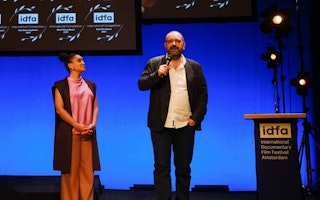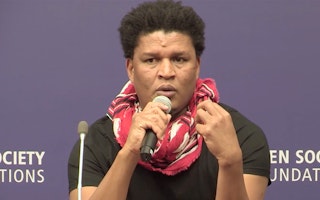On the Trail of a Mysterious Disease in Nicaragua
By Annick Shen
This week, we launched an Instagram feed that will feature dispatches from documentary photographers covering Open Society issues all over the world. To kick things off, photojournalist Ed Kashi has been posting photos from Nicaragua, where he is working on a project about a mysterious epidemic affecting sugarcane workers. Below, Kashi talks to us about his work.
Can you tell us a bit about what’s happening with the sugarcane workers in Nicaragua?
Nicaragua has become ground zero for a deadly epidemic of kidney disease, called CKDu (chronic kidney disease of unknown origin), affecting sugarcane workers in particular throughout Central America as well as in India and Sri Lanka. Over the past 20 years, more than 10,000 people have either died or contracted the illness in Central America alone. For most it’s a death sentence.
What has been the effect on the area where these workers live?
In the town of Chichigalpa, Nicaragua, where my work is taking place, a significant percentage of the population has been impacted. For some families it’s affected three generations.
The largest sugar operation in Nicaragua, Ingenio San Antonio, is based in Chichigalpa, so it’s basically a one-company town. There are few alternatives for work, other than the cane fields and the factory. Even with thousands of cane workers sick and many dead, with an average of one funeral a day in that town alone, people have no alternative.
What’s most disturbing is that the rate of contracting the illness has significantly accelerated, so that while workers in the past contracted it after decades of work in the fields, today young workers, mostly men, are getting sick within a few years.
What were you trying to capture in some of the family portraits you took?
One image that sticks in my head, which represents so much of the impact of this disease, is a nighttime portrait of three men, a father and his two sons. They are all sickened by CKDu, unable to work in the fields anymore. None of them worked longer than seven years in the fields.
They receive no benefits from the company and live in a boarded shack with a tin roof. They live like refugees, except this is the land they were born in. They worked hard, did nothing wrong, and yet are left with no support and really no future.
How is your approach to mobile photography different from your “regular” work as a photojournalist?
My approach to mobile photography is much freer than that of my 35 mm work. I allow more to be purely visual, responding to light, compositions, and moments that I know will be render a beautiful and impactful image in this new medium.
I love seeing the world in a square, playing with the visual elements but also being mindful of the content and the stories it can tell. Mobile photography is also a wonderful form of personal visual journaling, whether it be of my family, friends, or the small moments I see in my daily life.
How do you view the shifting line between the private and the public with respect to technology, and mobile technology in particular?
As technology allows us to record our most private moments along with our most private data, providing platforms to swiftly share this information, it is incumbent upon our schools and educators to teach media literacy more than ever.
All people, but particularly the new generations, must learn the implications of recording and sharing private information, whether it be visual or just purely text-driven data, so they protect themselves and also keep sacred the aspects of life that possibly shouldn’t be shared so freely.
Until January 2015, Annick Shen was the senior communications coordinator for photography at the Open Society Foundations and photo editor for the Documentary Photography Project.


